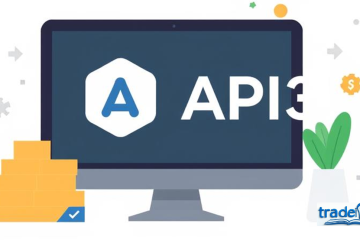BitTorrent Coin (BTT) is a cryptocurrency designed to enhance the BitTorrent ecosystem, the world’s largest decentralized peer-to-peer file-sharing protocol. Acquired by Tron Foundation in 2018, BTT incentivizes users to share bandwidth and storage, making file transfers faster and more efficient. BitTorrent Coin Buying
If you’re looking to buy, trade, or store BTT, this guide covers everything you need to know—from the best exchanges with competitive fees to secure wallet storage options.
What is BitTorrent Coin (BTT)?
BTT is a TRC-10 utility token built on the Tron blockchain. It serves several purposes:
- Incentivizing Seeders: Users earn BTT for sharing files.
- Faster Downloads: Peers can pay BTT to prioritize their downloads.
- Decentralized Storage: BTT powers BitTorrent File System (BTFS), a decentralized storage solution.
With a max supply of 990 billion tokens, BTT has gained traction among crypto enthusiasts and file-sharing communities.
Where to Buy BTT: Best Exchanges
You can purchase BTT on multiple cryptocurrency exchanges. Below are the top platforms offering BTT trading pairs with low fees and high liquidity.
1 Binance
- Supported Pairs: BTT/USDT, BTT/BTC, BTT/BNB
- Fees: 0.1% spot trading fee (lower with BNB discounts)
- Pros: High liquidity, staking options, low fees
- Cons: Not available in the U.S. (use Binance.US instead)
2 KuCoin
- Supported Pairs: BTT/USDT, BTT/BTC
- Fees: 0.1% trading fee (can be reduced with KCS holdings)
- Pros: No KYC for small trades, good liquidity
- Cons: Limited fiat deposit options
3 Huobi Global
- Supported Pairs: BTT/USDT, BTT/BTC
- Fees: 0.2% spot trading fee
- Pros: Strong security, multiple trading options
- Cons: Higher fees than Binance and KuCoin
4 Gate.io
- Supported Pairs: BTT/USDT, BTT/BTC
- Fees: 0.2% spot trading fee
- Pros: Wide range of altcoins, good liquidity
- Cons: Higher withdrawal fees
5 Poloniex
- Supported Pairs: BTT/USDT, BTT/BTC, BTT/TRX
- Fees: 0.125% spot trading fee
- Pros: TRX pair available, decent liquidity
- Cons: Lower volume compared to Binance
6 Bitrue
- Supported Pairs: BTT/USDT, BTT/XRP, BTT/BTC
- Fees: 0.098% spot trading fee
- Pros: Low fees, supports multiple pairs
- Cons: Smaller exchange with less liquidity
7 OKX
- Supported Pairs: BTT/USDT
- Fees: 0.08% – 0.1% spot trading fee
- Pros: Competitive fees, strong security
- Cons: Not available in the U.S.
How to Buy BTT (Step-by-Step Guide)
1 Buying BTT on Binance
- Sign Up: Create an account on Binance.
- Deposit Funds: Transfer USDT, BTC, or BNB via bank transfer, credit card, or crypto deposit.
- Trade BTT: Go to the BTT/USDT or BTT/BTC market and place a limit/market order.
- Withdraw to Wallet (Optional): Store BTT securely in a private wallet.
2 Buying BTT on KuCoin (No KYC Required)
- Register on KuCoin without full KYC (limits apply).
- Deposit USDT or BTC via crypto transfer.
- Trade for BTT in the spot market.
- Withdraw to a TRON-compatible wallet.
BTT Trading Fees Comparison
| Exchange | Trading Fee | Deposit Fee | Withdrawal Fee (BTT) |
|---|---|---|---|
| Binance | 0.1% | Free (crypto) | 1 BTT |
| KuCoin | 0.1% | Free (crypto) | 5 BTT |
| Huobi | 0.2% | Free (crypto) | 10 BTT |
| Gate.io | 0.2% | Free (crypto) | 15 BTT |
| OKX | 0.08% | Free (crypto) | 1 BTT |
Tip: Use exchanges with the lowest fees and withdrawal costs to maximize profits.
Best Wallets for Storing BTT
Since BTT is a TRC-10 token, you need a Tron-compatible wallet. Here are the best options: BitTorrent Coin Buying
1 TronLink (Browser & Mobile Wallet)
- Pros: Easy to use, supports TRX & TRC tokens
- Cons: Browser extension vulnerable to phishing
2 Trust Wallet (Mobile Wallet)
- Pros: Multi-coin support, secure & decentralized
- Cons: No desktop version
3 Ledger (Hardware Wallet)
- Pros: Cold storage, maximum security
- Cons: Costs money, less convenient for frequent trading
4 Exodus (Desktop & Mobile Wallet)
- Pros: User-friendly, built-in exchange
- Cons: Higher exchange fees
5 Atomic Wallet (Decentralized Wallet)
- Pros: Non-custodial, supports staking
- Cons: Slower transactions sometimes
Tips for Safely Storing & Managing BTT
- Enable 2FA on exchanges and wallets.
- Use hardware wallets for long-term storage.
- Avoid keeping large amounts on exchanges (risk of hacks).
- Double-check wallet addresses before sending BTT.
Future of BTT: Price Potential & Developments
- BitTorrent Speed adoption could increase BTT demand.
- BTFS (decentralized storage) may compete with Filecoin.
- TRON ecosystem growth could boost BTT utility.
While BTT is a high-supply token, its use case in P2P file sharing gives it long-term potential.
Conclusion
BitTorrent Coin Buying and storing BTT is straightforward if you choose the right exchange and wallet. Binance and KuCoin offer the best liquidity, while Trust Wallet and Ledger provide secure storage. Always compare fees and prioritize security when dealing with cryptocurrencies.
By following this guide, you can invest in BTT confidently and take advantage of its growing ecosystem.
Related Post:
How to Buy Klaytn (KLAY) Safely: Top Platforms & Tips for Beginners
Guide to Coinmama: Complete Review for Beginners
The Hidden Costs of Crypto Trading: How Fees Are Secretly Draining Your Portfolio




